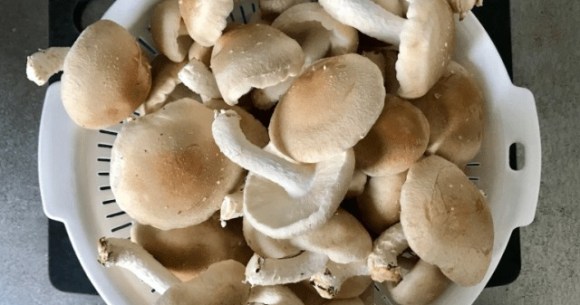
There’s mushroom for improvement.
AI is certainly handy for a lot of things. For example, anytime I want to know what a life-sized pick-up truck made out of orange peels looks like, I can get it visualized in seconds. But I’d stop short at using it for anything important involving health or money, mostly because everyone knows it would be impossible to get orange peels of sheet metal size to realistically build a full-sized pick-up. An AI with true intelligence would understand that it’d have to be a patchwork of smaller orange peels to make sense. Nevertheless, there are some people willing to take that leap of faith and have LLMs like ChatGPT or Gemini make their decisions for them.
Such a case happened on 3 November in the village of Shimokitayama in Nara Prefecture. A man in his 70s was out gathering wild mushrooms and found some that resembled either shiitake or oyster mushrooms.
▼ Shiitake mushrooms

The next day, he tried to show them to a local botanical garden to verify what kind they were and whether they were edible or not, but the staff was unavailable. Unwilling to wait, he instead took a photo of them with his smartphone and uploaded it to an AI, which agreed with his theory by saying, “They’re either shiitake or oyster mushrooms and are edible.”
Satisfied with the AI’s ID, the man grilled his mushrooms and ate them. About 30 minutes later, the vomiting started and he was hospitalized. Fortunately, the symptoms were only temporary and he could make a full recovery. A subsequent analysis by both the Wakayama Prefectural Museum of Natural History and the Wakayama City Public Health Division determined that the mushrooms were tsukiyotake, a poisonous species often confused for edible ones.
One way to spot a tsukiyotake is by the presence of a raised band around the stem just under the gills. They are also known to have very dark spots on the inside, but not always, and they remain poisonous even when cooked. But despite that information, the Public Health Division strongly advises against self-identifying mushrooms, even when using illustrated guides or AI.
▼ Tsukiyotake mushrooms… Probably… I’m just going by the label on the photo.

Always get your mushrooms checked by a trained professional, if for no other reason than to have someone liable in case of poisoning. Perhaps the hospitalized man could blame the AI for its misdiagnosis, but if we go by several online comments about the story, he himself bears at least part of the blame.
“The AI wasn’t even sure if it was a shiitake or oyster mushroom. Why would he trust its judgement?”
“I wonder if he went back to the AI and complained to it.”
“AI is only as good as its user.”
“There have been cases of edible mushrooms becoming poisonous too. You should always buy mass-produced mushrooms because if they are poisonous, someone would probably get sick before you.”
“What’s the joy in eating wild mushrooms anyway? Just buy them.”
“Shiitake and oyster mushrooms don’t even look similar.”
“The golden rule is: If you don’t know, don’t eat.”
Although it can be fun to go into the wilderness and gather your own food, anyone who does it really should know their stuff on an expert level before attempting it. Otherwise, just let that food be and leave it for the bears, and help maintain their food supply so they don’t come and bother the rest of us.
Source: MBS News, Hachima Kiko
Top image: © SoraNews24
Insert images: Pakutaso (1, 2)
● Want to hear about SoraNews24’s latest articles as soon as they’re published? Follow us on Facebook and Twitter!

